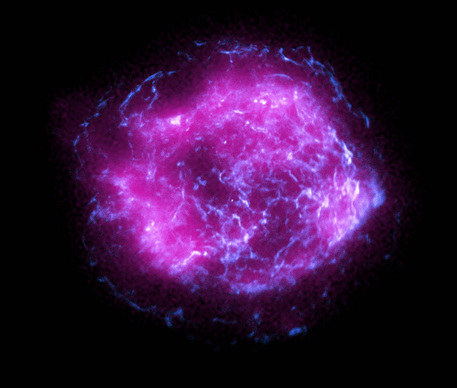(ANSA) - ROME, FEB 15 - The IXPE space telescope which Italy
helped to create with NASA has sent back its first image of the
most far-off phenomena in the universe.
IXPE, which stands for Imaging X-ray Polarimetry Explorer, honed
its X-ray gaze on Cassiopea A, a celestial object made up of the
remains of a star that explode in the 17th century.
The Italian Space Agency, which is involved in the project with
the National Astrophysics Institute (INAF) and the National
Nuclear Physics Institute (INFN), said the image was
"spectacular".
IXPE is a space observatory with three identical telescopes
designed to measure the polarization of cosmic X-rays of black
holes, neutron stars, and pulsars.
The observatory, which was launched 9 December 2021, is an
international collaboration between NASA and the Italian Space
Agency (ASI).
It is part of NASA's Explorers program, which designs low cost
spacecraft to study heliophysics and astrophysics.
The mission will study exotic astronomical objects and permit
mapping the magnetic fields of black holes, neutron stars,
pulsars, supernova remnants, magnetars, quasars, and active
galactic nuclei.
The high-energy X-ray radiation from these objects' surrounding
environment can be polarized - vibrating in a particular
direction.
Studying the polarization of X-rays reveals the physics of these
objects and can provide insights into the high-temperature
environments where they are created. (ANSA).
First image from IXPE space telescope sent
Heavenly body made up of remains of star that burst in 17th C
